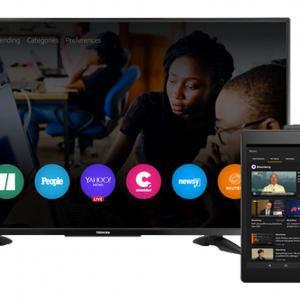In theoretical physics, there’s the idea of the multiverse, that beyond our observable universe, other universes or dimensions exist and maybe even overlap our own. It's still just a theory, but it makes you wonder what your potential alternate yous may be up to.
Brett Kagan doesn’t give much thought to his multiversal selves, whether or not they followed through with his teenage plan of dropping out of high school. But if the 31-year-old neuroscientist had pursued that timeline, the world today might be far behind in our understanding of the raw power of biological intelligence and our attempts to meld human brains with machines.
This October, Kagan and his colleagues at Cortical Labs in Melbourne, Australia, published results of a development that took the world by storm: Lab-grown brain cells in a dish learned to play an abridged version of the classic computer game Pong. That may sound utterly trivial or even Frankensteinian. But the endeavor could make studying the human brain — a notoriously hard organ to investigate — far easier. And in doing so, this achievement could enable researchers to study neurological conditions like epilepsy, depression, and schizophrenia in ways that were previously impossible, opening up the doors to novel treatments.
The luring call of psychology and cyborg mini-brains
Born in South Africa and raised in Australia, Kagan’s interest in the three-pound quivering mass of neurons didn’t arise from any bright-eyed childhood fascination. He had no love for academia — let alone science — and planned to cut his education short in high school. But one class lured him away from those shores toward the tantalizing siren call of psychology.
“I must admit, initially I thought, this [was] a very funny joke…no one is going to give you money to do this sort of wacky, out there, bleeding edge work.”
“I took a linguistics course in my final year,” he says. The psychology behind how we learn and understand language fascinated him. “[And that’s] when I decided to start taking school seriously.”
From this newfound enthusiasm came a scholarship to double major in law and psychology at Bond University located in Queensland’s Gold Coast, a city an hour’s car ride south of Brisbane. Kagan’s initial thought was to use law to channel his psychology interests and potentially become a forensic psychologist or a lawyer specializing in the field. But just as linguistics tempted him away from abandoning school, a class in cognitive neuropsychology forced him to consider the cellular drivers of human behavior: neurons.
“I realized what I was interested in wasn’t so much the psychology aspect, but more, how does psychology come about at the biological sense. You kind of think about it as psychology [is like] studying a movie, and what I was really interested in was the projector.”
Kagan went on to study stem cells, investigating their use in neonatal stroke, a condition with devastating consequences that’s more common among babies born prematurely. In 2019, he joined Cortical Labs, the brainchild of Hon Wong Chong, the company’s founder, and a former doctor, and Andrew Doherty, chief technology officer. The duo had a grand vision for their newly minted company, which was to pull a Terminator or The Matrix-esque integration of human neurons and silicon chips.

“I must admit, initially I thought this [was] a very funny joke…no one is going to give you money to do this sort of wacky, out there, bleeding edge work.”
But that joke — now called DishBrain, aka the clump of neurons in a dish that can play Pong — is now a proof-of-concept study that Cortical Labs hopes to scale up to an operating system running on biological intelligence.
How to teach a glob of brain cells to play Pong
The cyborg min-brain works like this: Around 800,000 human neurons, grown from a type of stem cell called a human-induced pluripotent stem cell (hiPSCs), are grown on a special silicon chip. The chip is connected to a computer, where the game is played on the screen. Kagan and his colleagues simplified the game, making it so that there’s a single paddle on one side of the virtual table.
Electrical signals conveyed via the chip to the neuronal network told them whether they hit the white dot and relayed that information to the computer. At first, the neurons weren’t really good at their easy-mode Pong. But, over time, their game improved, missing less and making more consecutive hits after 15 minutes of play.
As Kagan points out, the neurons don’t have eyeballs, nor do they have emotional incentives to play, unlike a fully-formed person after a loot box. So what’s motivating them?
The phenomenon the researchers suspect is operating here, says Kagan, is something called the free energy principle. Pioneered in 2010 by English neuroscientist Karl Friston (who’s also a Cortical Labs shareholder), the gist of the free energy principle is that all life, neurons included, try to minimize free energy; they learn what’s going on in their environment and choose predictable stimuli over unpredictable stimuli.
The free energy principle has become a unifying theory, much like how psychohistory in Isaac Asimov’s Foundation series boils down psychology, history, and physics to statistical science. Kagan says the free energy principle is helpful in understanding what motivates biological intelligence and separates it from artificial intelligence, which is largely programmed to be goal-directed through reinforcement learning.
“It makes sense, of course, because biologically, we’ve evolved to learn and act in real-time with low samples and high power efficiency,” says Kagan. “If you see a tiger, you can’t look at it 100 times, let alone twice, to decide do I run or not run? We have to evolve to be adaptive and quick.”
Because of the tens of thousands of connections a single neuron can make with other neurons, it’s difficult to ever replicate or mimic this synthetically or algorithmically, which is why we need to develop technologies imbued with the computational power of the human brain, says Kagan.
This all may sound like a lead-up to sentient robot uprisings or a Cyberpunk: Edgerunners dystopia, but don’t worry — neuron-powered computer chips are a far-distant future, if scientists do manage to get there. At present, Kagan says, DishBrain could be used as a sandbox for pharmaceutical drug testing and seeing how substances like alcohol affect a neural network’s ability to process information. Going further, Kagan and his colleagues at Cortical Labs are hoping to use DishBrain, and its future iterations, to better understand neurological conditions like epilepsy, depression, and schizophrenia. Such efforts may open up possibilities for alternatives to testing new drugs or gene therapies on animals, says Kagan.
Original Article Link to read more
Article source: https://article-realm.com/article/Computers/34239-This-neuroscientist-taught-brain-cells-to-play-Pong.html
Reviews
Comments
Most Recent Articles
- Oct 23, 2024 Why are Apple devices so worth it? by Anna Paquin
- Oct 15, 2024 URL SEO: 7 Expert Tips to Create SEO-Friendly URLs by matthew brain
- Sep 30, 2024 How to install and use Project / Visio (2016/2019/2021) without product key by charles hensen hensen
- Sep 30, 2024 Top 10 Web Design Mistakes To Avoid In 2024 by matthew brain
- Sep 26, 2024 How to get admission in Orenburg State Medical University? by chhotelal
Most Viewed Articles
- 3275 hits Activate www.youtube.com/activate on Roku and Kodi Platform by rokucomlinkhelp
- 2696 hits sling tv sound but no picture by elisabeth warner
- 2053 hits 2 Important Points to Consider When Hiring to a Family Photographer by William Smith
- 1863 hits Yotta new game : Mafia City 'Clan Is Family, Family Backs One Another' by Asuna xing
- 1822 hits Concediti ogni secondo mentre sei in discoteca a Barcellona by NANCY SMITH
Popular Articles
In today’s competitive world, one must be knowledgeable about the latest online business that works effectively through seo services....
77514 Views
Are you caught in between seo companies introduced by a friend, researched by you, or advertised by a particular site? If that is the...
33030 Views

Walmart is being sued by a customer alleging racial discrimination. The customer who has filed a lawsuit against the retailer claims that it...
14057 Views
If you have an idea for a new product, you can start by performing a patent search. This will help you decide whether your idea could become the...
11258 Views
Statistics
| Members | |
|---|---|
| Members: | 15673 |
| Publishing | |
|---|---|
| Articles: | 64,357 |
| Categories: | 202 |
| Online | |
|---|---|
| Active Users: | 485 |
| Members: | 5 |
| Guests: | 480 |
| Bots: | 26823 |
| Visits last 24h (live): | 1603 |
| Visits last 24h (bots): | 37447 |

